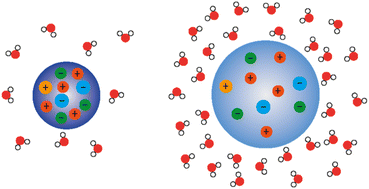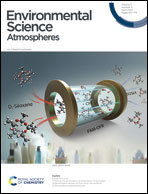Hygroscopic growth of single atmospheric sea salt aerosol particles from mass measurement in an optical trap
Abstract
Sea salt aerosol is among the most abundant aerosol species in Earth's atmosphere, and its hygroscopicity is an important parameter to quantify its interaction with solar radiation. Conflicting values for the hygroscopic growth have been reported in the literature, which decreases the accuracy with which their impact on Earth's climate can be modelled. Here we report new values of the hygroscopic growth for a selection of salt compositions representative of atmospheric sea salt. These values are obtained from single optically trapped aqueous droplets with dry radii between 0.3 and 2 μm, using a recently developed method for single particle mass measurement in an optical trap. We compare our results to earlier studies and propose a way to reconcile the apparent discrepancies found in the literature. Within our studies, we also observe the crystallization of CaSO4·2H2O (Gypsum) during the drying of optically trapped sea salt droplets at significantly larger relative humidity of 65–68% than the main efflorescence relative humidity at 50%. This preceding transition occurred in the absence of any contact of the particle with a surface.

- This article is part of the themed collection: Particle Levitation to Address Challenges in Atmospheric Science


 Please wait while we load your content...
Please wait while we load your content...